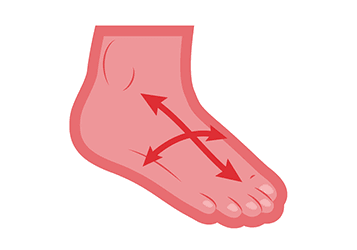The history of the pressurised cabin
Humans need air to live, so we perform at our optimum around sea level where air is abundant. Aircraft performance is best at higher altitudes for both airspeed and fuel efficiency where the air is thin and smooth. Over the years we have invented and developed a flying machine that thrives where humans don’t. This became obvious as soon as engine power increased to a point at which aviators could reach altitudes where they lost consciousness.
At first, flyers coped by filling tanks with pressurised oxygen and inhaling the gas through rubber tubes; later, form-fitting face masks made oxygen delivery more reliable. In many high-flying light airplanes and military aircraft, oxygen systems and face masks are still used to keep the pilot alive and conscious today.
In 1937, the U.S. Army Air Corps began research flights in a modified Lockheed Electra; the XC-35 was the first airplane built with a pressurised cabin. The fuselage was designed with a circular cross-section to eliminate stress points when the fuselage expanded under pressure. Openings were sealed to prevent air from escaping. Windows were reduced in size and strengthened, and the cabin inside became a pressure capsule (like a big aluminium can) that held five people.
Air is normally pressurised by the engines. Turbofan engines compress intake air with a series of vaned rotors right behind the fan. At each stage of compression, the air gets hotter, and at the point where the heat and pressure are highest, some air is diverted. Some of the hot, high-pressure air called "bleed air", is sent to de-ice the wings and other surfaces, some goes to systems operated by air pressure, and some starts its journey to what’s known as 'the packs'. In simple terms it is an industrial, primitive and yet reliable air conditioner. This bleed air is compressed, cooled, compressed, expanded and cooled again to output a cold dry air to which non-conditioned warm air from the engine is added to heat the aircrafts cabin to the desired temperature.

Supplemental oxygen was required by pilots flying above 14,000 feet until the invention of the pressurised cabin
Cabin altitude and the human body
Oxygen saturation: Cabin air contains ample oxygen for healthy passengers and crew. However, because cabin air pressure is relatively low, the amount of oxygen carried in the blood is reduced compared with that at sea level.
Gas expansion: As the aircraft climbs in altitude after take-off, the decreasing cabin air pressure causes gases to expand. Similarly, as the aircraft descends in altitude before landing, the increasing pressure in the cabin causes gases to contract. These changes may have effects where air is trapped in the body. Most expansion of gases occur in the sinuses, abdomen and gastrointestinal tract. The other lesser- known effect is on the inert gases within the blood stream itself, which is where the associated problems with altitude and feet begin.

As altitude increases, pressure decreases, gases expand and a parcel of air cools. This change in temperature occurs due to diabatic cooling from the pressure reduction.
The feet
Swollen feet are a common malady among air travellers that can cause significant pain and discomfort. Generally, your feet will swell a half size, to a full shoe size bigger than normal. While the problem usually goes away on its own once you're on the ground, it's worth knowing what causes feet to swell. Boarding your next flight armed with reasons why feet can swell and how you can take measures to prevent it.
Inactivity
Taking a flight requires sitting in one small space for an extended period of time, sometimes over 12 hours. If you don't move around regularly, the muscles that have the responsibility of moving fluid out of your legs become dormant. Thus, the fluid settles in your feet and causes swelling.
Pressure
The low cabin pressure can keep your blood from moving as quickly as it normally would and cause fluid to build up in your feet. That same pressure can work against the already-formidable force of gravity to keep fluid in your feet instead of circulating properly.
Dehydration
Aircraft travellers and crew often don't get enough to drink the day of and during their flight. On the aircraft, water is generally consumed less than on the ground. All of these, in addition to the naturally dry air of the plane's cabin, can contribute to dehydration. Dehydration thickens blood and inhibits regular flow, which can lead to swollen feet with sluggish blood.
Travel Fare
Popular travel snacks, such as chips, crackers and nuts, are often packed with sodium. Food served on board the plane is typically just as sodium-filled due to the preservatives required to keep the food fresh as well as seasoning to increase taste. A sudden increase in sodium intake can cause you to retain water, thus causing your feet to also swell.

Swelling of the feet occurs uniformly due to decreasing pressure that causes expansion and pooling blood.
So show do we overcome this?
Sky Soles uses heavily waxed and conditioned leathers that cope better with dehydration. We also use innovative Coronet linings that cope better with swelling. The stiffer calf upper, rigid insoles and heel counters help to keep your shoes in their original shape during and after every pressurisation. We also use a cutting-edge foam technology called "Poron" that allows moisture wicking, breathability and multiple compressions ensuring the footbed adjusts with the changing shape of your foot.



